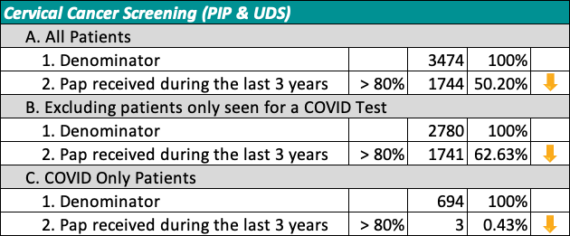June 9, 2021; Tommy Havell, i2i Director, Population Health Solutions
When the first case of COVID-19 appeared in the Bay Area, Mission Neighborhood Health Center (MNHC) was already feeling the community tension and apprehension associated with the approaching pandemic. By mid-March 2020, shelter-in-place orders, quarantines, and staff shortages had broken workflows and halted all quality improvement projects. In their commitment to serve the community, MNHC turned to data analytics and technology to provide a clearer picture of the pandemic’s impacts and create a new playbook for the times ahead.
Initial Challenges
The pandemic introduced a berth of new data that needed to be collected and monitored:
- Telephone Calls and Outreach Efforts
- Telehealth Visits
- COVID-19 Lab Data
- COVID-19 Vaccines
Initially, COVID testing data provided insight into the pandemic’s impact by race, ethnicity, zip codes, financial classification, and corresponding positivity rates. This information was helpful for the health center’s outreach and educational efforts for their patients and the community.
MNHC’s community COVID testing included comprehensive visits, which caused COVID test patients to pull into their quality metric denominators. This projected a skewed view of the health center’s actual performance.
To correct for this, they created customized reports in i2iTracks® to exclude “COVID Testing Only” encounters. Focusing now on their true patient encounters, MNHC showed significantly higher performance compared to the community at large.

Adapting to a New Normal
With this understanding of their true quality metrics, the focus shifted towards quality improvement. As shelter-in-place orders adjusted, and telehealth gradually gave way to more in-person visits, this data helped to further focus their outreach efforts and prioritize care items that were within reach.
By using i2i’s Huddle Reports and Missed Opportunity Reports, MNHC identified care gaps and due items in the metrics that could be obtained either remotely or in-person when possible, adjusting their protocols to capture these priority items. The result was significant improvement across multiple metrics upon the application of these data analyses.
Mission Neighborhood Health Center has continued to adjust their analytics, processes, and workflows along with the shift from testing to vaccination and their community’s re-opening. By leveraging the power of data-driven insight, MNHC successfully navigated the challenges of the pandemic, and has created new workflows designed to move them into a post-pandemic new normal.
For more details on how MNHC used population health management tools in response to the COVID-19 pandemic, register for the upcoming webinar hosted by NWRPCA on June 29th at 1pm central time.
